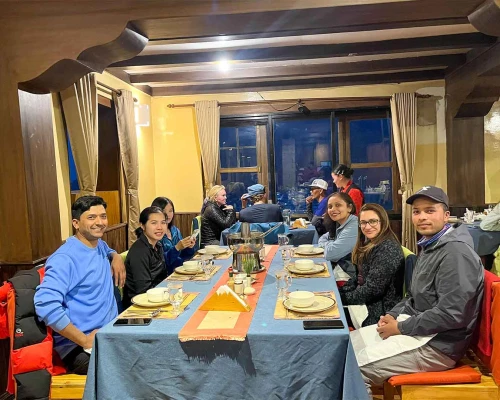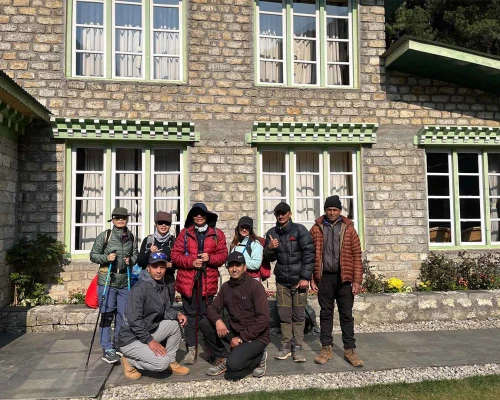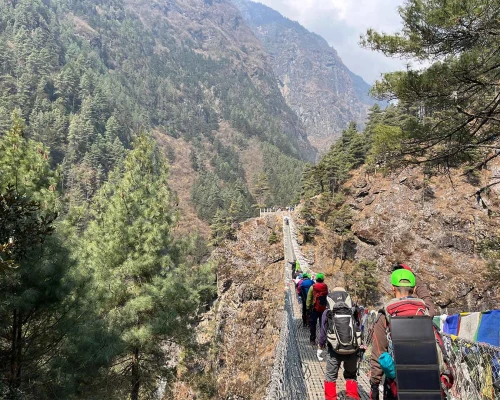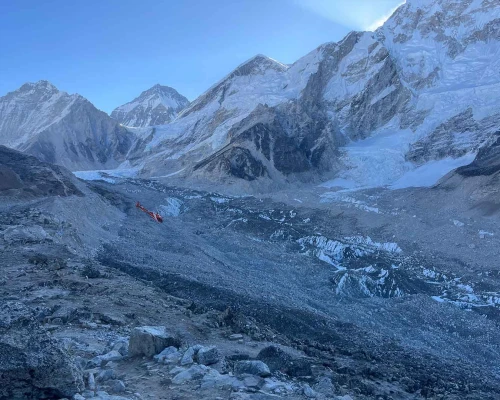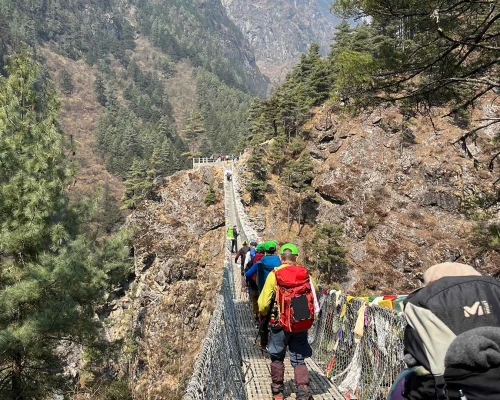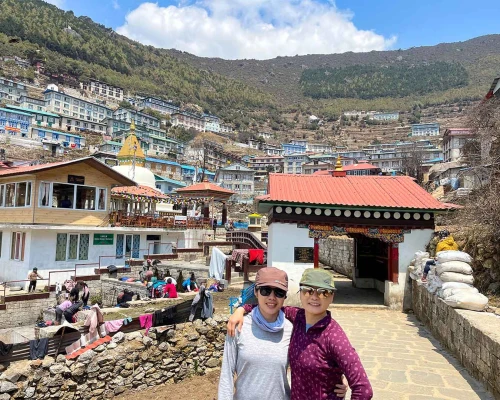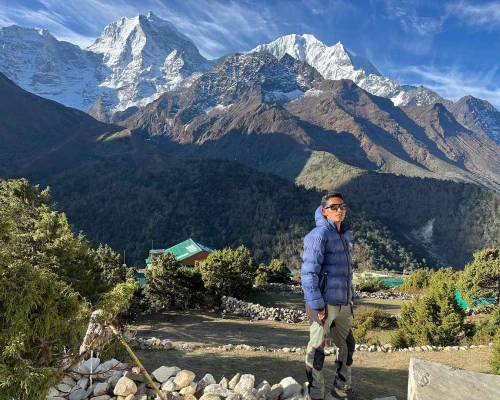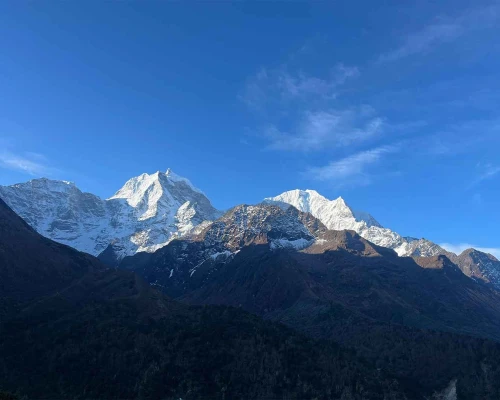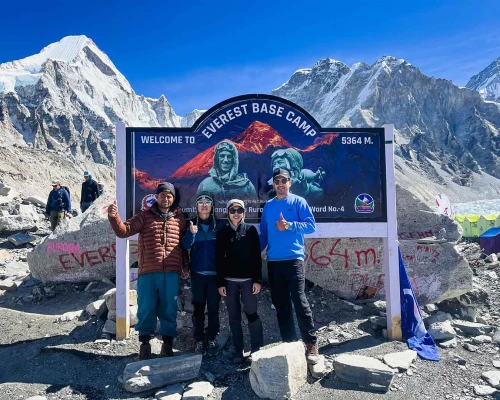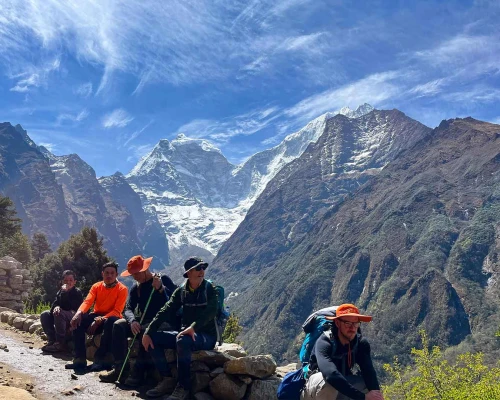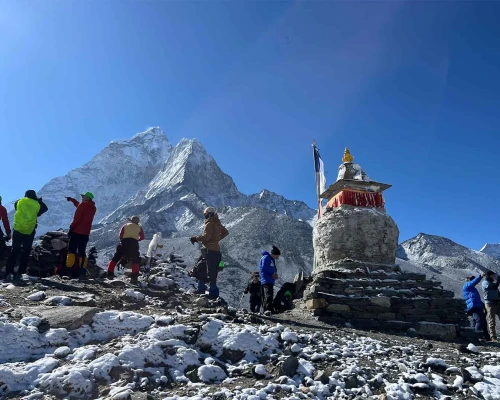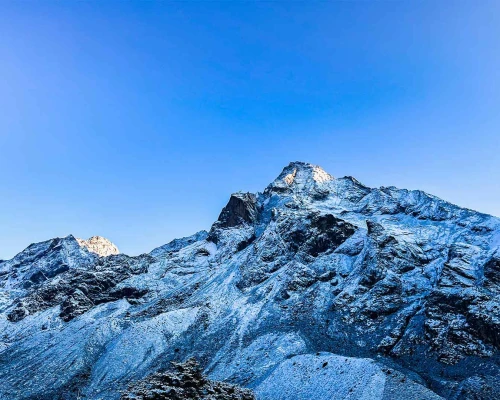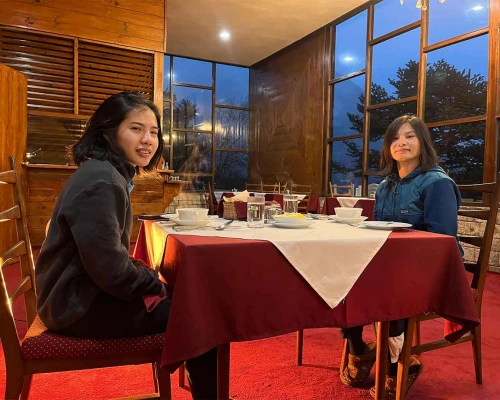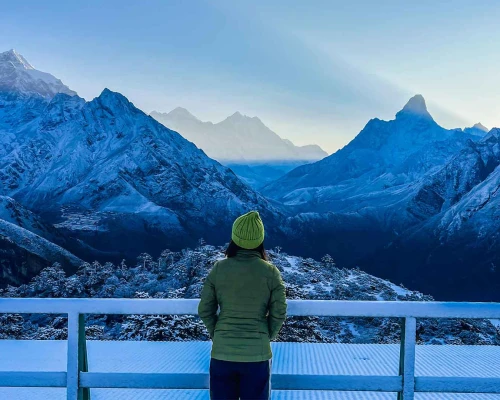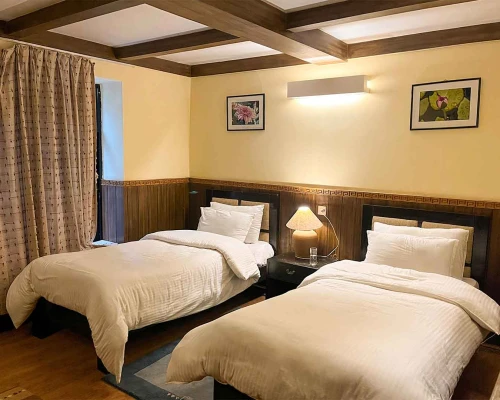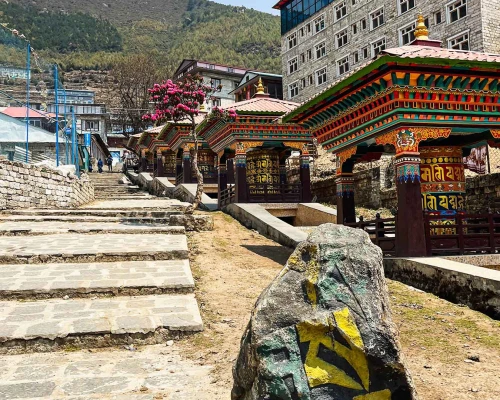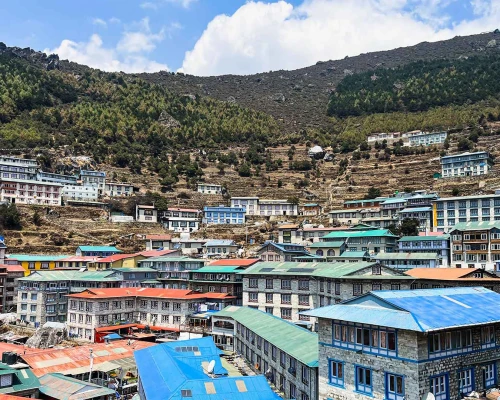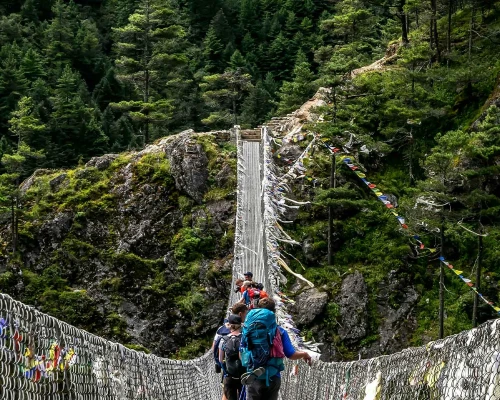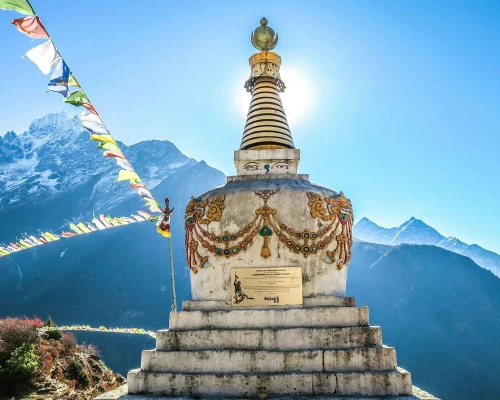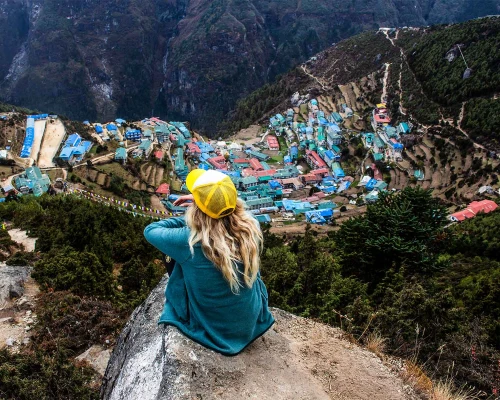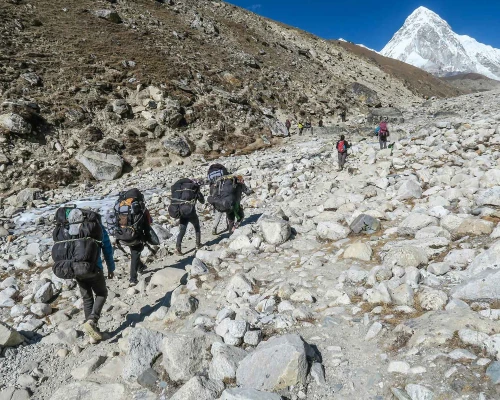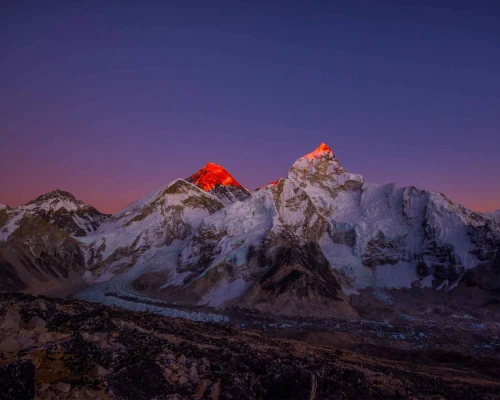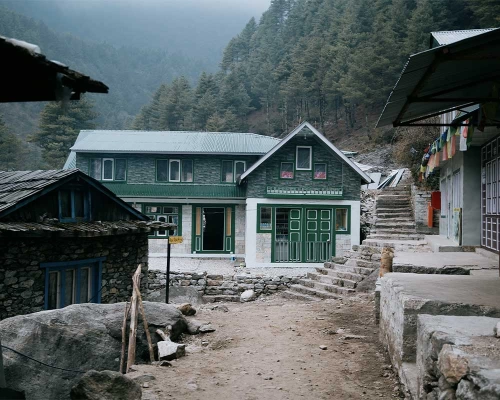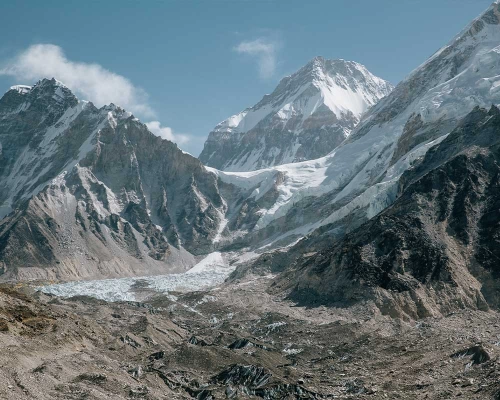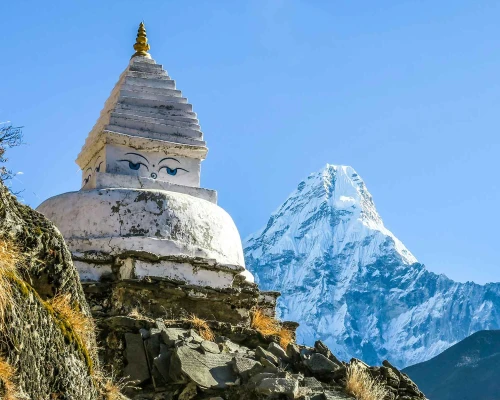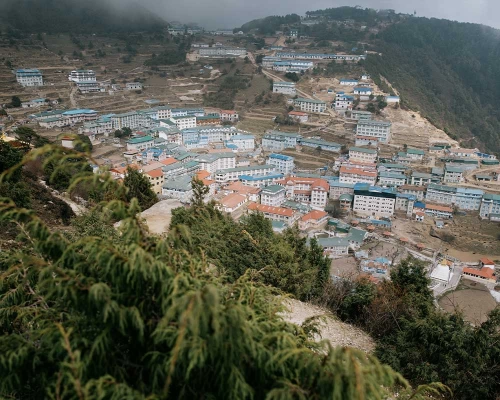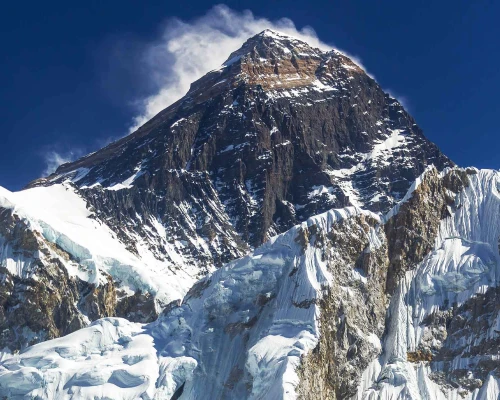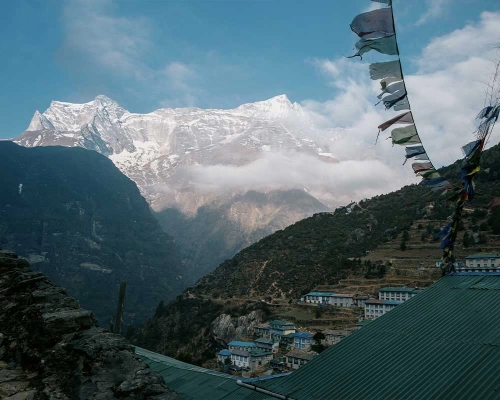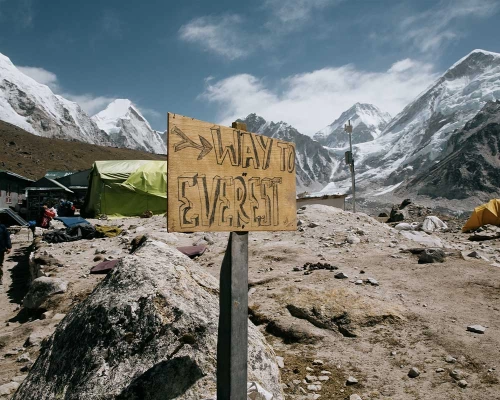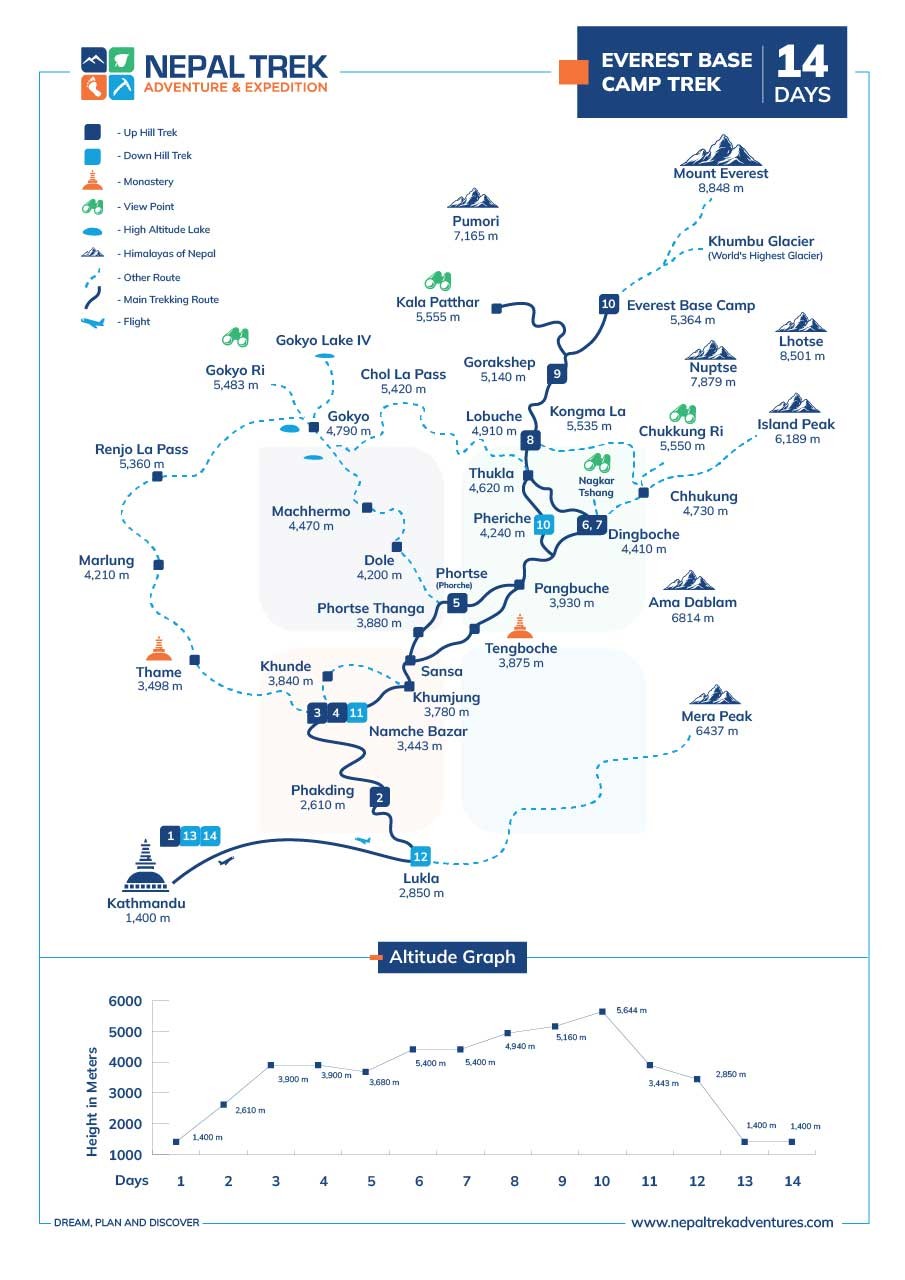About Everest Base Camp Trek, #1 World's Best Hiking Trail
Everest Base Camp trek is among the most visited trekking destinations in the world with thousands of hikers visiting each year. The trek is situated in Nepal’s Khumbu region which is also fondly referred to as Everest Region.
This is a daring high altitude trek to Everest Base Camp in Nepal. Your adventure kicks off from Kathmandu in a flight to Lukla and proceeds up through the Khumbu glaciers to Kala Patthar. This trail offers a chance to experience Sherpa culture in its richness.
For individuals who adore mountains and nature, the only possible choice would have been the Everest Base Camp Trekking. After all, this trek commences from a cultural valley only to land one into Sagarmatha National Park, which is considered to be one of the most well-preserved ecosystems on this planet. Therefore, it is right to say that EBC Trek embodies an adventure spirit that’s coupled with silence; it’s filled with traditions about people who live there so far and splendorousness of Ace Mother’s creations.
The total distance of the round trip to and from the base camp normally is about 300 kilometers (186 miles). On average, it takes 14 days to trek for an ordinary trekker and it includes a scenic flight to and from Lukla by a small plane.
One of the main destination of this trek is Everest Base Camp. Another is Kala Patthar (Black Rock), which stands at 5,645 meters (18,519 feet) above sea level. From here, you get the best views of Mount Everest and Nuptse (Tibetan West Peak), offering a "Once in a lifetime experience."
EBC trekking is a self-discovery expedition that gives people new outlook concerning life and keeps them away from the busy nature of day-to-day existence. Further, it allows them to mingle with the bold climbers who manage to reach the top most point on this planet.
As an expedition core up to the “Goddess of the Sky”, trekking to Mount Everest Base Camp is what it is. Referred to as Chomolungma in Tibetan and Sagarmatha within Nepal, Everest is a name gotten from “Sagar” denoting sky and “Matha” meaning head as seen from afar; this literally means “The Head in the Great Blue Sky” in English.
The southeast ridge route is the pathway by which Edmund Hillary and Tenzing Norgay ascended Mount Everest to its peak in 1953. On May 29th 1953 at 11:30am Nepal Time they reached the top using the South Col route from South Col. It is also an easier path to navigate with less of a technical challenge as opposed to coming up from North side.
Everest Base Camp Trek 14 Days Trail Guideline
As you may be aware, the Everest Base Camp Trek (EBCT) is referred to as “one of the most iconic trekking routes of the world.” Trekking route, which is difficult but also fulfilling, winds through the Khumbu Valley. Beginning of our trek is Lukla 2,619 m (8,593 ft), the gateway of Mt. Everest. Lukla serves as our initial destination from where we begin our journey towards the base camp of Everest mountain. Therefore, we go up to Namche Bazaar which is called "The Sherpa Capital" from there.
In the Khumbu region, Namche Bazaar is regarded widely as the main commercial and an important stop for people trekking high in the Himalaya.
Next, our path leads to Tengboche, a sacred Buddhist monastery situated at 3,860 meters (12,630 feet). Here, we can immerse ourselves in spiritual heaven. Tengboche monastery offers unique traditional beliefs of the Sherpa people. The Himalayan peaks seen from Tengboche are Tawache, Everest, Nuptse, Lhotse, Ama Dablam, and Thamserku, among many more.
Tenzing Norgay was born in the nearby village of Thani. He was the first man to summit the peak of Mount Everest with Sir Edmund Hillary. Norgay became a monk at Tengboche Monastery. After spending a day in Tengboche, our next destination is Dingboche Camp.
Dingboche stands at an elevation of 4,410 m (14,470 ft) in the Khumbu region of Nepal. Our 14 days Everest base camp trek will pass through Dingboche village. It serves as our second base for acclimatization. The climate of Dingboche is tundra (ET), according to Köppen. The climate has cool summers with heavy rains and dry, frigid winters, influenced mostly by the altitude and the summer monsoon.

The best periods to go Everest trekking are in the spring (March and April) or fall (October and November). The cold and stark winter months are surely among the best times for hiking. Due to this, during these months most trails are empty and accommodation facilities are cheaper. This is because most people do not prefer trekking during winter (December to February) because of cold. The Everest Trek in winter offers less crowded trails with valued customer care from local tea houses in the Solukhumbu region.
And then we head to Lobuche, in the Khumbu area of Nepal, Lobuche (also Lobuje) is a small village near the base of Mount Everest. Lobuche is one of the second-last overnight spots on the "trail to base camp" path to Everest Base Camp (South) on the southeast route.
Hiking to Everest Base Camp and Climbing to Kalapathar
After that, we will arrive at Gorakshep which is the final stop on the way to the base camp. This location acts as the starting point for people ascending to Everest Base Camp one last time, and its elevation is 5,364 meters (17,598 feet) above the sea level. This is where we mountaineers can easily climb up the Everest base camp. After the summit, we are going to Gorak Shep. The Dalai Lama called it "the steps to heaven." Lukla to Everest Base Camp hikes wrap up here. The next day, we hike to Kala Patthar (5,545 m, 18,192 ft) for a unique vista of Everest, and start decending to Lukla via Pheriche, Namche Bazzar, and Phakding.
Best Time to do Everest Base Camp Trek in Nepal
The best time to do Everest Base Camp trek is from late September to November, March to May, and December to February. During these months, the weather is usually stable and the sky is clear, so you can see the mountains very well.
 In autumn, the weather is mild and the days are sunny, which makes it a great time to go hiking. This time of year is also less busy than spring. In the spring season, the weather is warmer and the flora is in full bloom, which makes the scenery even more beautiful. But this is a popular time to hike, so the trails may be full of people. Winter is less crowded, but you still need extra layers of clothing.
In autumn, the weather is mild and the days are sunny, which makes it a great time to go hiking. This time of year is also less busy than spring. In the spring season, the weather is warmer and the flora is in full bloom, which makes the scenery even more beautiful. But this is a popular time to hike, so the trails may be full of people. Winter is less crowded, but you still need extra layers of clothing.
If you are an adventurer looking for a once-in-a-lifetime experience, then Booking a Everest Base Camp Trek is definitely worth considering.
Ready to pack your bag on the adventure of a lifetime? Join us for an unforgettable trek to Everest Base Camp! Don't miss this opportunity to explore the roof of the world - book your trek today!
Challenging Yet Rewarding Everest Base Camp Trek Itinerary for All Ages (with a Guide)
The 14 days Everest base camp trek itinerary is designed to reduce the risk of altitude sickness by limiting daily altitude gain and scheduling an acclimatization period.
For proper rest, comfortable seating is required during the trek. In this itinerary, there are two acclimatization days: Namche Bazaar at an elevation of 3,450m (11,319ft) and Dingboche at an elevation of 4,410 m (14,470 ft) for adapting your bodies to the higher altitude.
Achieving the base camp of Mount Everest is a big accomplishment which only few people will witness. The trekkers leave behind money forming a major part of income for people in those areas as they also help to advertise companies which deal in trekking to act as a form of responsible tourism and is sustainable for the people staying there and their surroundings.
Starting from your arrival day at TIA in Kathmandu, Nepal, and the adventurious flight to Lukla, you’ll be hiking for six to seven hours daily, and the trail ascends and descends as it winds through countless side valleys, rough stony paths, and high-altitude mountain passes.
To access the base camp of Everest is simple for anyone, whether you are of school going age, say a ten-year-old child or an elderly person who is seventy years old. Therefore, make good use of this chance and get to do something that is most people's dream-hiking high up in the mountains around Everest. Thus, one must be healthy enough-physically and even mentally sound so as to undergo through such paths.
To ensure your safety and navigate through the challenging terrain while solo trekking at Everest base camp, it is highly recommended you hire a guide.
NTA Travel Tips for Mount Everest Base Camp Trip
- A good level of fitness is needed for the trek, so it's important to start training early.
- Focus on building your stamina by doing cardio and strength exercises.
- Altitude sickness is a real risk on the trek, so it's important to acclimate properly.
- Take your time to adjust to the altitude, and don't rush to higher elevations.
- The weather in the Himalayas can be unpredictable, so it's important to bring clothes that are warm and waterproof, as well as a good sleeping bag and a down jacket.
- Make sure you have all the right equipment and gear.
- Make sure to drink a lot of water and eat foods that are full of nutrients.
- If you want to do a solo Everest base camp trek, you should hire a guide or join a trekking group.
- Everest guides have the knowledge and experience to make sure the trek is safe and fun.
- Getting travel and medical insurance is a must for any trek in the Himalayas.
- Make sure that your policy covers medical care and evacuation in case of an emergency.
- Respect the local environment and culture.
- Carry trekking permits and necessary documentation
- Follow the Leave No Trace principles and don't litter or leave trash behind.
- Be ready for delays and problems that come up out of the blue.
- Be ready to adapt to changing situations and have a positive mentality.
Everest Base Camp Group Trek: Joining the Fixed Departures
14 days Everest base camp trek for group joining operates whether you are a single, double, trio, or are in any number. We provide a group joining facility with another group of strangers to complete the Everest base camp trip. The 14 days EBC trek includes 2 nights Hotel in Kathmandu, round-trip flight tickets, a guide, and a sharing 1 porter by every 2 guests.
Regular type of trek is budget frindely, in which you will share guide and porter with other trekkers. To get a Premium experience, please consider going on the Everest luxury trek.
Private Everest Base Camp Trek, 14 Days
The private trekking to Everest base camp means you will book the trip with your private team or family members. We provide everyday departure for those who book a private trip to Everest throughout the year. Traveling in a private group or solo will provide an opportunity to make the journey as lavish as possible, with private lodging, lavish meals, and other amenities. Most importantly Private Everest base camp gives you the flexiblility of trekking at your pace, no need to rush or wait for other travellers, you can enjoy entire hike one your own style.
Check out our useful information section to know about Everest Base Camp Trek. Or if you have more questions about the EBC Trek. Feel Free to TALK TO BINOD our Travel Expert
For Booking Check Availability
Everest Base Camp Trek Booking Procedure
To book an Everest base camp trek, you have to visit the listed fixed departure, select a preferred trip type, and proceed with the necessary steps. Once you complete the booking, you will get a confirmation email.
In case of any issues, you can reach out to us on Whatsapp (Binod) and send a prompt inquiry regarding your desired trekking experience. We can also personalize the trek package to align with your specifications.
For a confirmed departure on your chosen trip date, 100% payment of the cost is required. However, if you wish to secure your trek without full booking, a minimum of 50% of the total trek package cost should be paid, depending on the nature of your fixed departure tour or customised itinerary.
Also, a minimum of 50% of the booking amount is needed for treks that involve multiple domestic flights, a Special Permit (Restricted Area Permit), or 4-star hotels in mountain areas or cities. The remaining 50% payment can be settled at our head office in Kathmandu or upon arrival in Nepal before your scheduled trek departure.
Book now and get free t-shirts, caps, and stickers.




